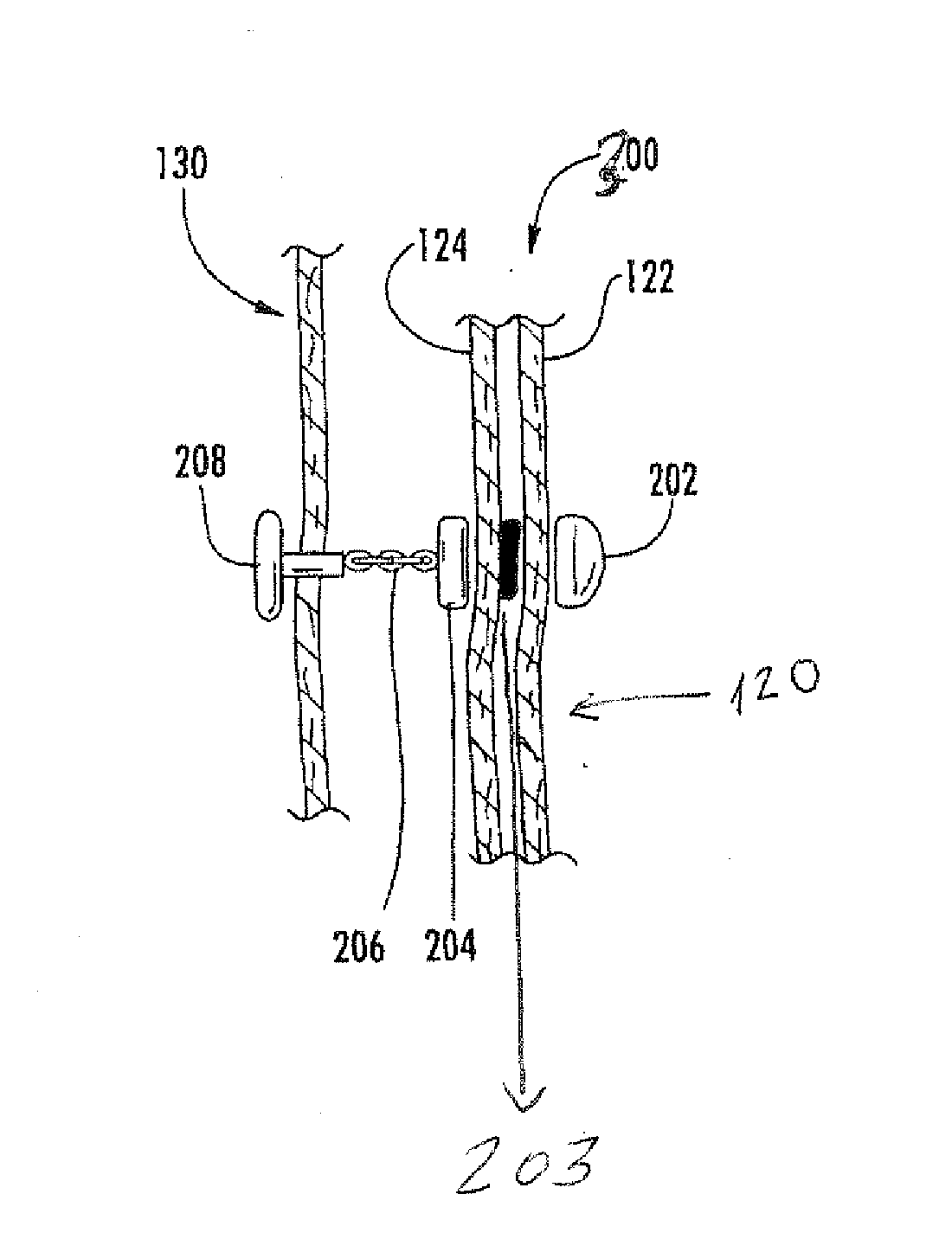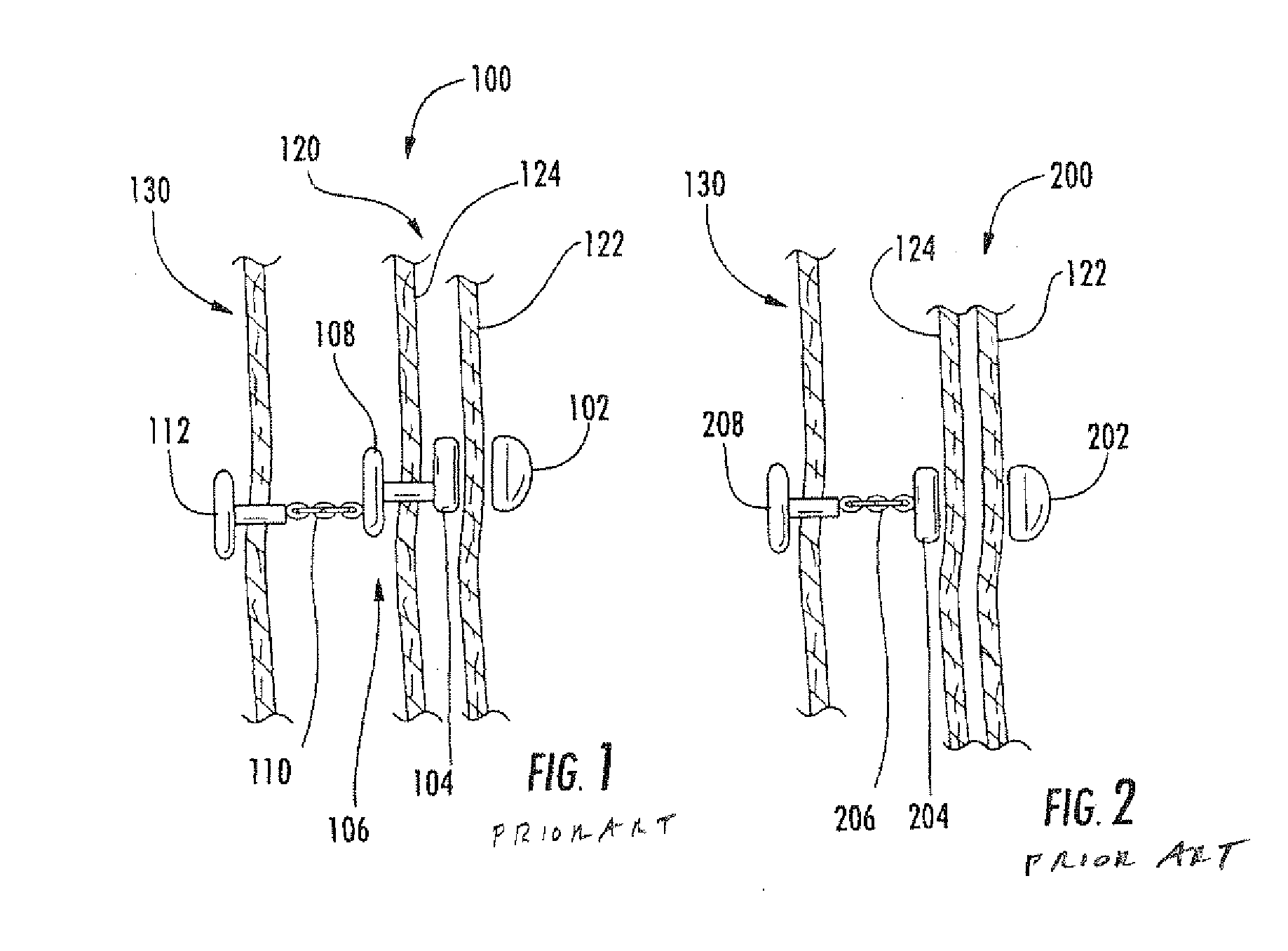Multielement magnetic closure
a magnetic closure and multi-element technology, applied in the field of closures, can solve the problems of affecting the appearance of the tie, damaging the tie, and enhancing the visual appeal
- Summary
- Abstract
- Description
- Claims
- Application Information
AI Technical Summary
Benefits of technology
Problems solved by technology
Method used
Image
Examples
Embodiment Construction
[0015]Referring to FIG. 1, a tie pin 100 disclosed in U.S. Pat. No. 7,992,264 includes outer magnet 102, inner magnet 104, piercing pin 106, pin base 108, chain 110, and T-shaped end 112. Piercing pin 106 is attached to pin base 108, which is constructed of the same material as piercing pin 106 and can form a “T” shape in combination with piercing pin 106. Chain 110 can be a metal chain constructed of brass, aluminum, stainless steel, precious metals (gold, silver, platinum, etc.), or can be constructed of other materials and is attached to both pin base 108 and T-shaped end 112. T-shaped end 112 can be constructed of brass, aluminum, or stainless steel, precious metals, or can be constructed of other materials. Also illustrated in FIG. 1 is tie 120 comprised of front end 122 and rear end 124 and shirt 130. Tie 120 can be any available necktie, whether made of silk, wool, synthetic, or other materials, or a combination of materials. Shirt 130 can be any shirt, such as a men's dress ...
PUM
 Login to View More
Login to View More Abstract
Description
Claims
Application Information
 Login to View More
Login to View More - R&D
- Intellectual Property
- Life Sciences
- Materials
- Tech Scout
- Unparalleled Data Quality
- Higher Quality Content
- 60% Fewer Hallucinations
Browse by: Latest US Patents, China's latest patents, Technical Efficacy Thesaurus, Application Domain, Technology Topic, Popular Technical Reports.
© 2025 PatSnap. All rights reserved.Legal|Privacy policy|Modern Slavery Act Transparency Statement|Sitemap|About US| Contact US: help@patsnap.com



